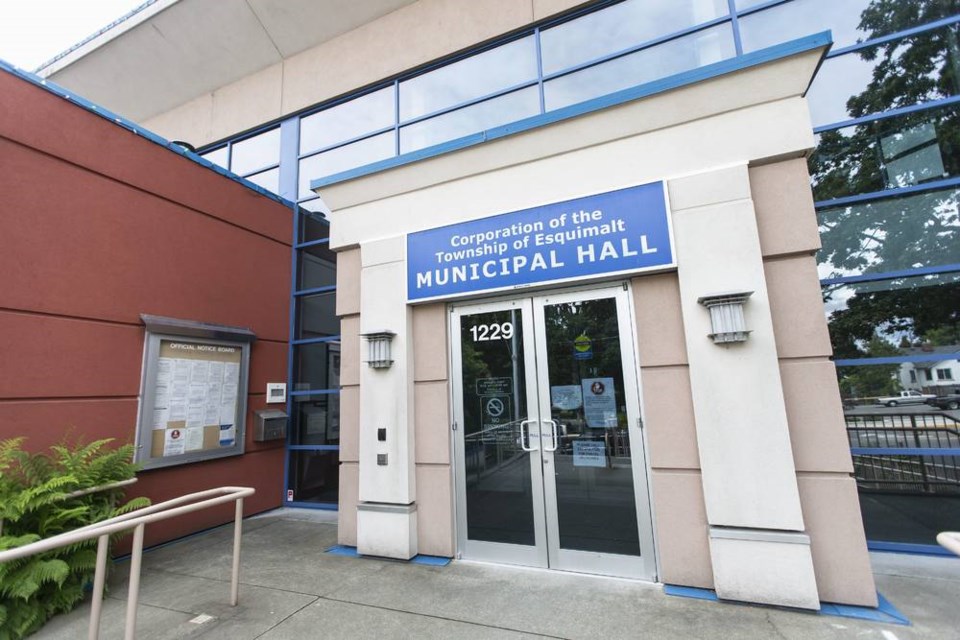The public used to vote on some contentious questions.
A century ago, a provincewide referendum brought an end to Prohibition.
In 1956, Oak Bay residents banned the sale of raw milk.
In 1958, Victorians voted 2-1 in favour of amalgamation with Saanich (though Saanich rejected the idea by a similar margin).
In 1961, Saanich residents OK’d the sale of beer by the glass.
In 1981, Victoria voters gave their blessing to Sunday shopping.
Direct democracy isn’t as exciting these days, though an Esquimalt case is currently causing a bit of a kerfuffle. It involves a proposed replacement for the municipality’s cramped, crumbling public safety building. There’s some grumbling over the $42-million cost — $7.1 million from the Capital Regional District money Esquimalt got for hosting the McLoughlin Point sewage plant, the balance to be borrowed — and some over the approval process.
Instead of asking residents to troop to the polls (during COVID) and vote in a referendum to approve the borrowing, the municipal council has opted for a process in which anyone who opposes the idea must submit a form to town hall, either by email or as a hard copy. The borrowing measure will pass unless at least 10 per cent of eligible voters (a minimum of 1,380 people) object by 4:30 p.m. on May 10.
Using this alternative approval process, as it is known, is a first for Esquimalt but not for many other municipalities. It has been around since 2004, when the provincial government deemed it an efficient and relatively inexpensive way for municipalities to go to the voters, as they are required to do in certain circumstances, such as when they want to borrow for large capital projects. It’s cheaper than staging a referendum, particularly in years when there’s no council election on which to piggyback.
Nanaimo used the alternative process in 2011 when seeking to borrow $22.5 million to finish a water-treatment plant, and again in 2018 when looking for $17 million for a fire station. Central Saanich and View Royal did so in 2011 and 2012 respectively when building firehalls. North Cowichan opted for it last year when looking to borrow for a new RCMP building. Ditto for the Capital Regional District when seeking $16 million for a regional 911 centre.
Much of this stuff isn’t terribly sexy or controversial. When the Strathcona Regional District sought to set up an arms-length corporation to oversee an upgrade to broadband internet service, the topic seemed more likely to make taxpayer eyes glaze over than light up. When the Comox Valley Regional District looked to borrow for a $110-million water treatment plant in 2018, only 31 people filed objections, far fewer than the 4,785 it would have taken to halt the project. Given the lack of opposition, would it really have been worth paying for a referendum?
Proponents of the alternative process also like to point out that it’s not a rubber stamp: In 2014, a proposal to expand Ladysmith’s municipal boundaries failed when the number of people filing objections topped the 10 per cent threshold.
Still, opponents see the process as flawed, comparing it to negative-option marketing, a practice that curls consumers’ lips. (Some readers will remember the uproar in 1995 when Canada’s cable television companies got in hot water over a scheme in which subscribers would be charged for a higher-cost package of channels unless they specifically refused it.)
The alternative process is also seen as an under-the-radar way to shepherd spending through without a lot of public engagement. Referendums are more high profile, require active voter involvement, pro or con, so foster more vigorous debate. Remember 2010, when the to-and-fro raged for months before 61 per cent of Victorians (or, at least, 61 per cent of the the 26 per cent of eligible voters who cast ballots) approved construction of the new Johnson Street Bridge? Also note that it took the City of Victoria more than two decades and two referendums to win approval to borrow $30 million to build Save-on-Foods Memorial Centre.
Other levels of government need not worry about any direct-democracy process at all, don’t have to get permission to build new schools, or hospitals or courthouses, or whatever. (Contrast the interminable Save-On arena process with what just happened half a block away, where B.C. Housing announced the $25-million purchase and conversion of the Capital City Center hotel property for social housing.) Imagine if every publicly funded capital project needed voter approval.
It would be fun to have a do-over on Sunday shopping, though.



